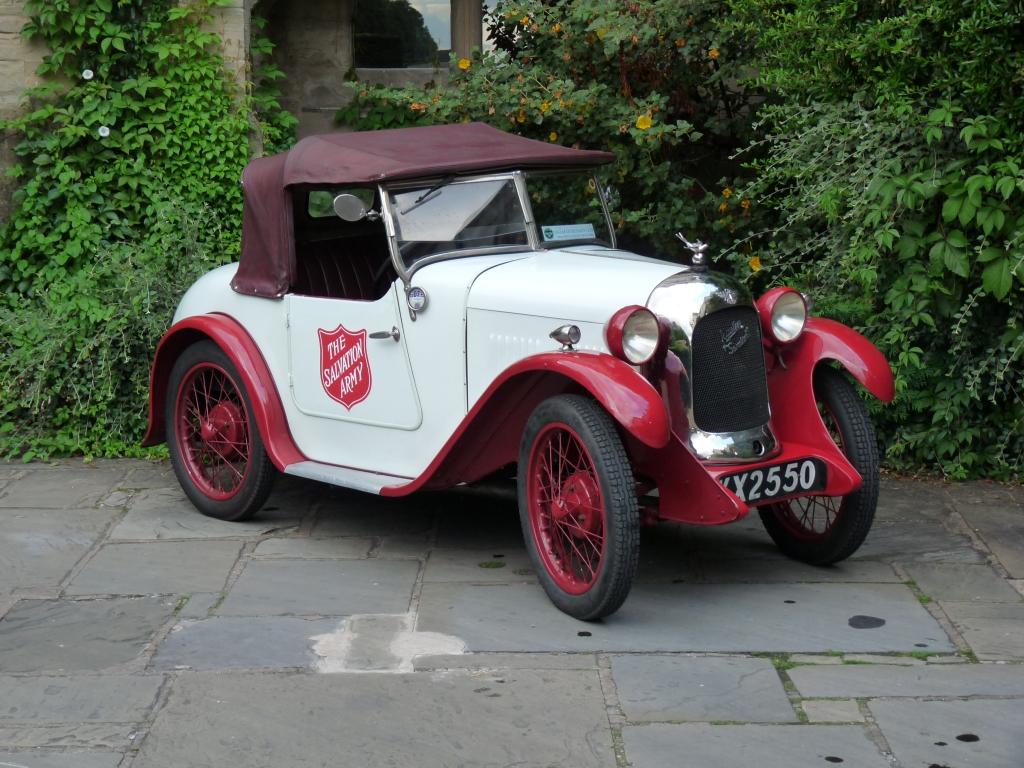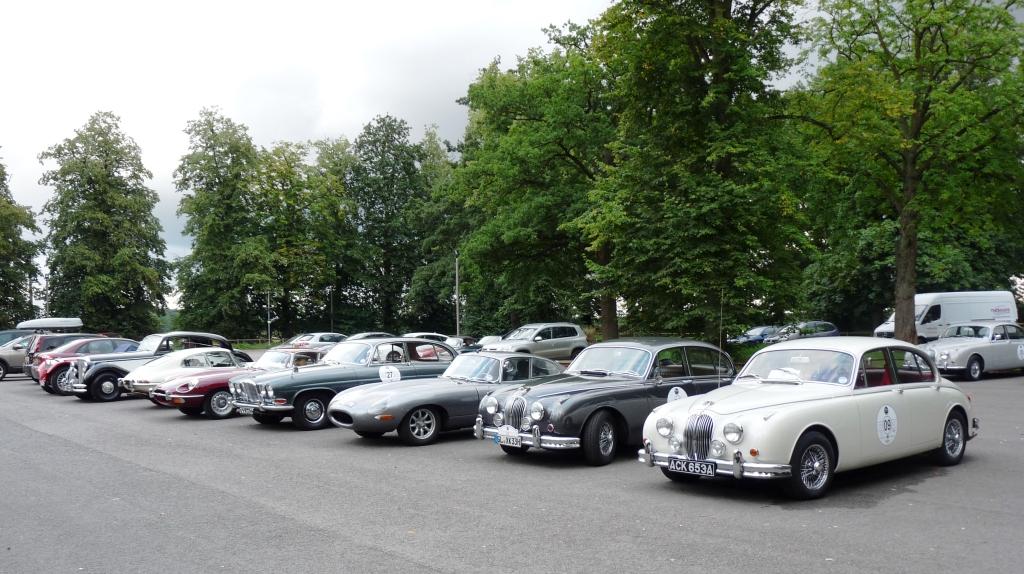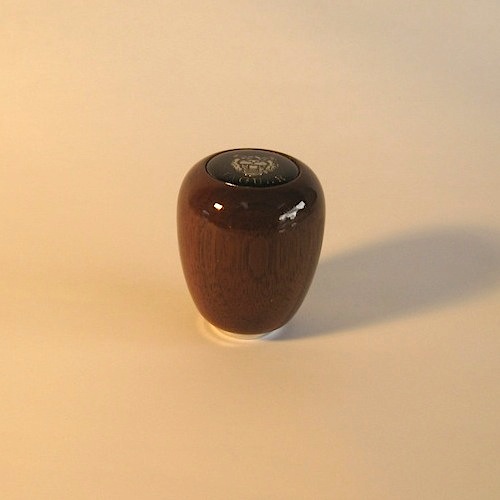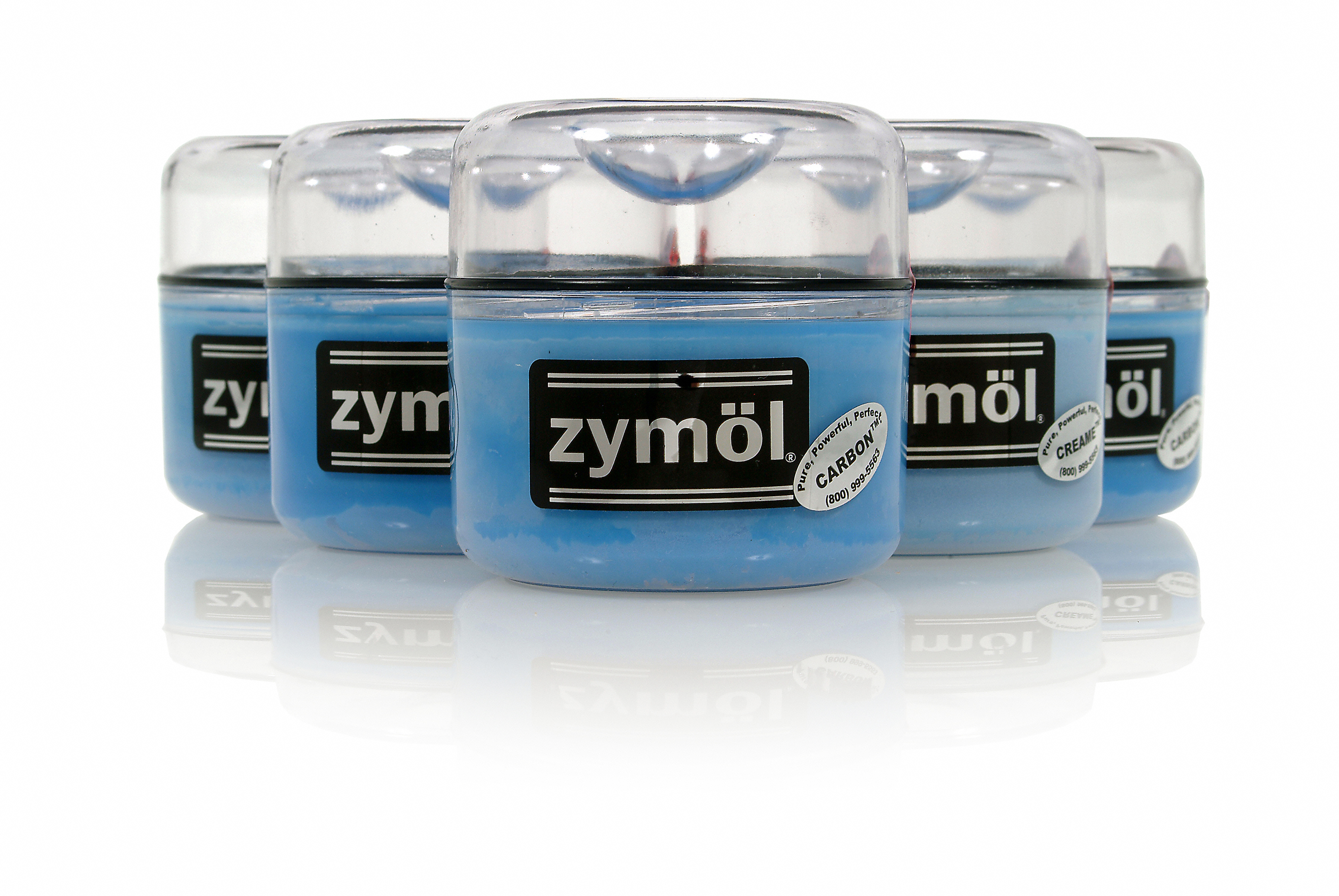Jaguar ready to race at 2012 Goodwood Revival
Jaguar Cars aims to provide a highlight to spectators at this weekend's Goodwood Revival, with Jaguar Heritage Racing entering race-ready versions of the legendary C-type and D-type cars.
See below exclusive preview film featuring legendary Jaguar cars in action at Goodwood Motor Circuit
Jaguar's entries at Goodwood mark the final race in an incredibly successful first season in historic motorsport for Jaguar Heritage Racing. At the Revival meet, the team aims to build on victories already recorded in 2012 at Monaco Historique, Le Mans Classic and the Nürburgring AvD Oldtimer Grand Prix.
The race-ready C-type and D-type will line up in the hotly-contested Freddie March Memorial Trophy and Sussex Trophy respectively. In addition, Jaguar Cars' partner in Jaguar Heritage Racing, JD Classics, will enter a race prepared Jaguar Mk. 7 saloon. The vast Mk. 7 will be driven in the St Mary's Trophy race by JD Classics' owner Derek Hood, and Le Mans 24hrs racer Andy Wallace.
Adrian Hallmark, Global Brand Director, Jaguar said: "Goodwood Revival is unique and a world class event for collectors, drivers and enthusiasts of classic cars and heritage motor sport.
"It showcases some of the finest and most successful race cars ever built and I am proud that we are able to bring the rich heritage of Jaguar to life; both on track and as part of our bespoke displays.
"It is an excellent opportunity to celebrate Jaguar's history, and a showcase for our enduring and distinctive brand of values of seductive design, innovative technology and sporting performance."
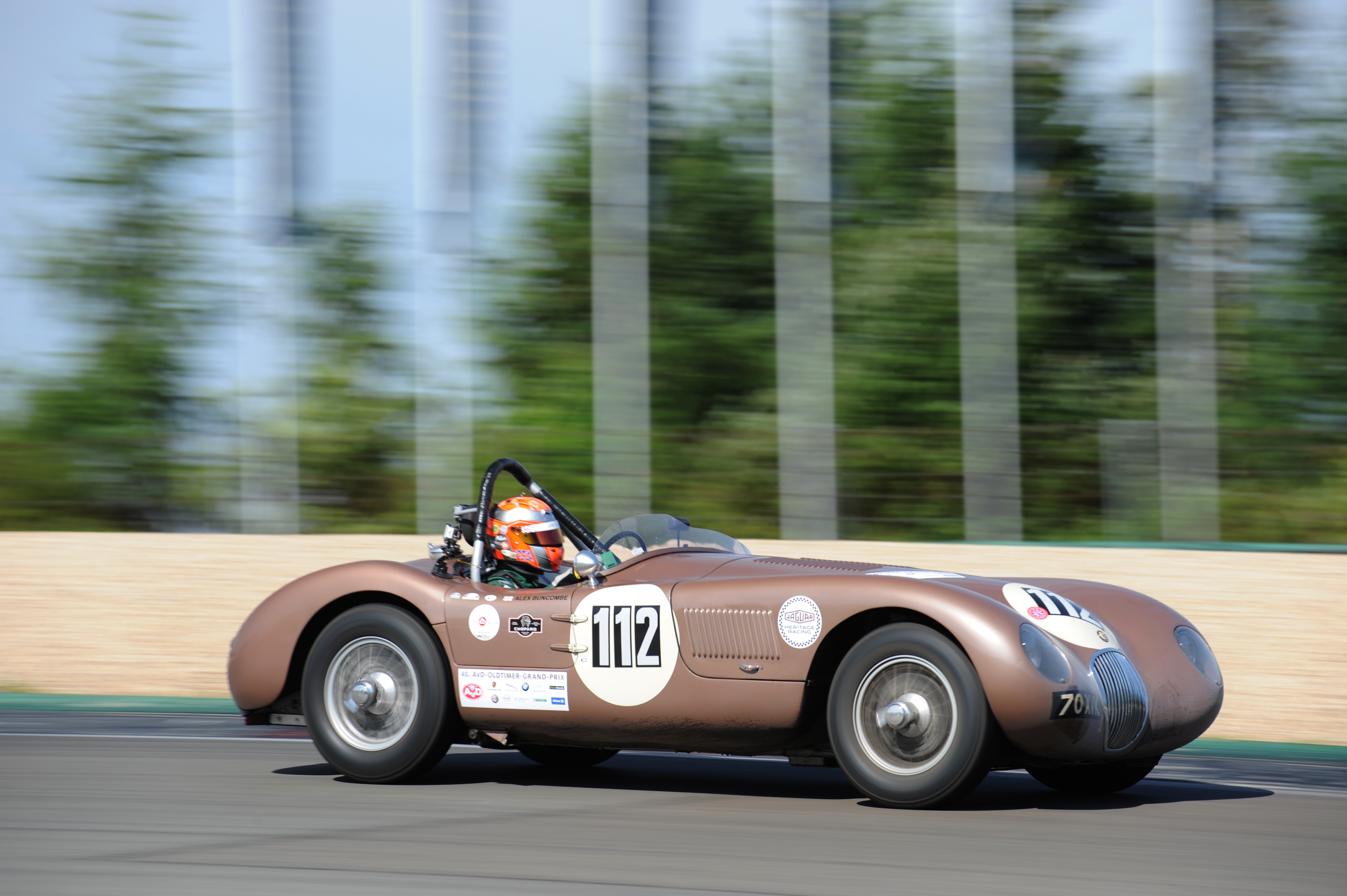
Each race at Goodwood Revival comprises a unique field of professional racing drivers mixed with highly capable seasoned historic racers, so Jaguar Heritage Racing driver Alex Buncombe expects stiff competition at the famous race track in Southern England. Over the course of the weekend, Alex and John Young will be driving the ex-Juan Manuel Fangio C-type, in addition to a D-type in race specification.
Jaguar Cars also has a static display for public viewing at the period recreation of the Earls Court Motor Show, where it will present a C-type and XK 120. Accompanying these on the Richmond Lawn will be a C-type, D-type and XK 140.
Purr-fect!
Jaguar Heritage Vehicles on display at Heritage Motor Centre
As previously announced, Jaguar Heritage will be re-locating from its current Browns Lane, Coventry home to new premises later in the summer. As part of this plan, arrangements were made to transfer some of the historic vehicles from Jaguar Heritage's extensive collection to a new display area within the Heritage Motor Centre at Gaydon in South Warwickshire. This has now taken place and the new display of historic Jaguars opened to the public for the first time on July 21.
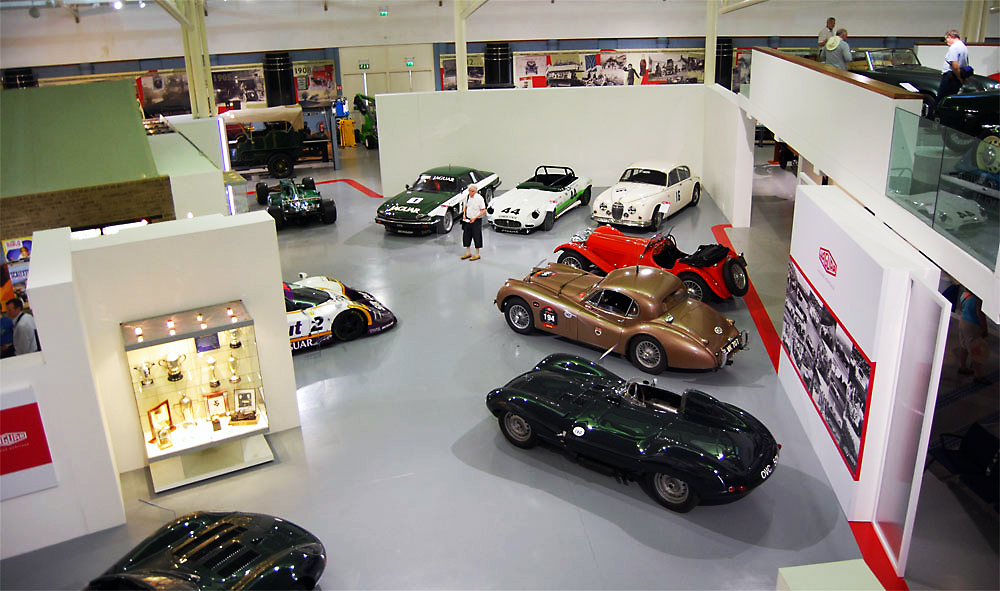
The new display area showing the view from the gallery above
The theme of the display is Jaguar Sports and Competition cars, and visitors to the Heritage Motor Centre will be able to see a collection of ten Jaguar Heritage vehicles representing some of the finest examples from Jaguar's illustrious sports car and racing history.
This exciting collection ranges from a 1938 SS100 to a Jaguar Formula One racer from the 2002 season. Other models include the 1951 XK120 that was driven continuously for seven days and seven nights at Monthléry, the 1954 D-type and 1988 XJR-9 Le Mans cars, the unique XJ13 and the XJ220 concept car.
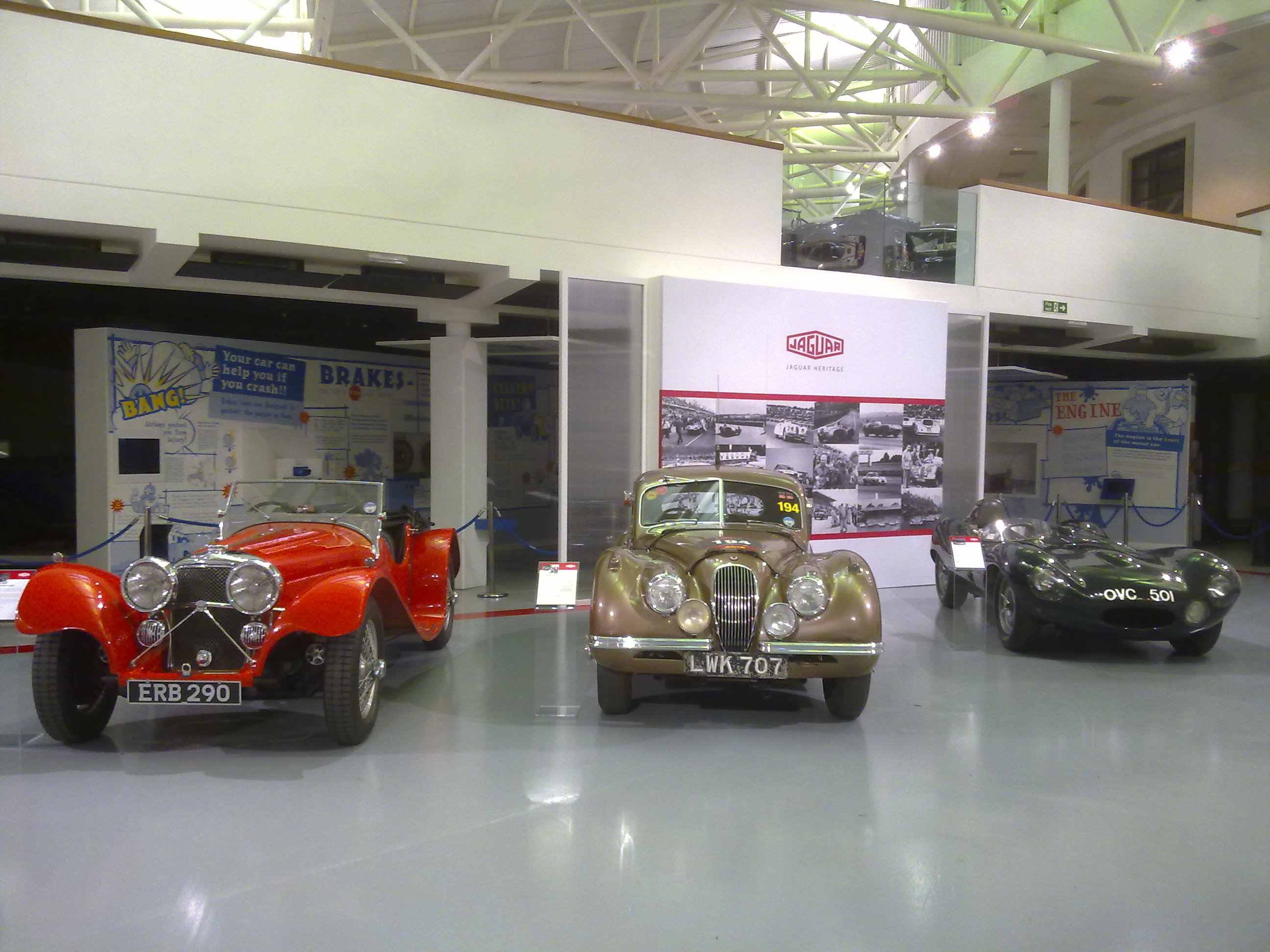
Above three iconic sports cars - SS100, XK120 and D-type
Also on display are a Mark ll (Coombs), E-type Group 44 and XJS TWR. Many of the models are original and fully operational, just as they left the factory. The collection represents an exciting addition from one of Britain's most iconic marques to the HMC's already comprehensive display of classic British cars.
The vehicle display is supplemented by two trophy cabinets containing a selection of cups, medals and other awards gained by Jaguar over its many years in competition. There is also a video wall playing a compilation of extracts charting Jaguar's motorsport history from the late 1940s to the 1990s.
Tim Bryan, Head of Collections & Interpretation at the Heritage Motor Centre stated “We are delighted to be working with our colleagues at Jaguar Heritage and show-casing this amazing collection of vehicles for visitors to enjoy and admire”.

Entry prices to the Heritage Motor Centre Museum are: Adults £11, Child £8 (5-16 years) under 5 free, Concessions £9 & Family £34 (2 adults & up to 3 children). For more information about the Museum please visit www.heritage-motor-centre.co.uk.
Purr-fect.
Le Mans 1957 DVD Now available at the Purr-fect Gift Shop
We invite you to spend a Weekend at Le Mans and experience the action and atmosphere of this unique motorsport event during a classic era.
From the archives of the BP Video Library comes a short colour film capturing one of the most spectacular 24 Hour races ever, Le Mans 1957. It is packed with roaring engines and squealing tyres as the greatest names in motorsport history battle for more than 300 laps.
Weekend at Le Mans features mouth-watering footage of D-Type Jaguars, Ferraris, Maseratis, Aston Martins and more in high-speed action around the world-famous circuit. It also captures the atmosphere, build-up and offers a rare glimpse ‘behind-the-scenes’ of the 1957 race. Among the stars are such legends as Mike Hawthorn, Peter Collins, Stirling Moss, Tony Brooks, Jean Behra and, of course, Ivor Bueb and Ron Flockhart, who continued the Jag domination of Le Mans in the face of the toughest competition.
What could be better than watching action from the Le Mans 24 Hours? How about travelling the course alongside one of Britain’s greatest-ever racing drivers!
In our second film from the BP Video Library, that’s exactly what you get. A camera is strapped to the back of a D-Type and a microphone fitted to Mike Hawthorn so he can commentate his way around the circuit in 1956 – the result is rare and revealing treat. Hawthorn delivers his verdict on the track, and on the driving standards of our Gallic cousins!
Plus, this DVD includes the evocative sounds of the 1957 Le Mans courtesy of Sound Stories, from Stanley Schofield. Nevil Lloyd commentates as we hear the wonderful sounds of the highly-tuned engines, and interviews with the drivers. Just close your eyes and let yourself be transport back in time to one of the greatest Le Mans 24 Hours ever.
Enjoy free shipping Australia wide when you sign up and register with our website or visit our showroom and view our entire range in person, Purr-fect!
Swallow to Jaguar 90th Anniversary Tour
The exclusive Tour organised by Jaguar Heritage to celebrate the 90th anniversary of the foundation of the Swallow Sidecar Company (the predecessor to Jaguar Cars) got underway on Sunday, September 2 in Coventry.
The participants assembled in the grandiose surroundings of Coombe Abbey where they were staying for the first night. Following registration formalities and a driver briefing, the guests were transported by coach into central Coventry - Jaguar's spiritual home for over 70 years.
On arrival they were treated to a guided tour of the old cathedral, the ruins of which remain as a proud monument alongside the new cathedral designed by Basil Spence, which was consecrated in 1962.
Above the oldest car on the Tour - a 1929 Austin Seven Swallow.
Following this, they tranferred to the magnifcent St. Mary's Guildhall with a drinks reception in the 14th century undercroft followed by dinner in the main hall. St. Mary's is considered to be the finest medieval guildhall in the country and has a history going back to 1340 when building started on the former site of Coventry Castle.
The opening address and official welcome on behalf of Coventry City was delivered by well-known local businessman Joe Elliott who is Chairman of the Coventry Transport Museum and a Jaguar Heritage Trustee. Other honoured guests included Ralph Speth, CEO of Jaguar Land Rover, Norman Dewis, former Jaguar Test and Development chief, and Mike O'Driscoll, Chairman of the Jaguar Daimler Heritage Trust.
On a fine Monday morning, the Tour particpants set off from Coombe Abbey on the first leg of their journey which took them to Sir William Lyons former home, Wappenbury Hall, where there was a photo opportunity alongside an original Swallow Sidecar outside Wappenbury's famous front door.
Above some of the participating vehicles parked up at Coombe Abbey ready for the Tour start.
The Tour then headed via the Shuttleworth Collection to Cambridge for the next overnight stop, where guests were treated to an exclusive dinner in the ancient St. John's College. From Cambridge the Tour will make its way round England in an anti-clockwise direction before ending up in Blackpool, the birthplace of the Swallow Sidecar Company, for the final two nights. En-route attractions include, the royal estate at Sandringham, Castle Howard, the National Railway Museum in York, the Aysgarth Falls and beautiful Lake Windermere.
Around 40 cars are taking part in the Tour ranging from a 1929 Austin Seven Swallow through to the latest XJ Super V8. There are fine examples of many models from the Jaguar history books including Mark V, Mark ll, Mark X and 240 saloons as well as SS100, XK140, XK150 and E-type sports cars from all three series.
Purr-fect.
Jaguar Accessories now Available at the Purr-fect Gift Shop!
We are proud to announce that Jaguar Accessories are now available to purchase from the Purr-fect Gift Shop. Depending on your model, you can choose from our ever expanding range of Jaguar Accessories, from specialised interior items such as Jaguar Gearshift Knobs to exterior accessories such as Jaguar Leaper Bonnet Mascots for Classic and Modern Jaguars to complete the look.
In the future we will continue to build this range and make them available for sale online and in our showroom.
Enjoy free shipping Australia wide when you sign up and register with our website or visit our showroom and view our entire range in person, Purr-fect!
Click Here to View our Jaguar Accessories
Purr-fect!
JRA TWR Jaguar XJS Back in Action Again
Our good friend Mike Roddy has been back in action with the original Bathurst winning JRA TWR Jaguar XJS. At the recent V8 Supercars round at Winton, Roddy beat the ex-Gibson Nissan in two of the three races contested. This result gave the ex-works Jaguar its very first victory since that epic day back in 1985 where John Goss nursed the car across the line, his seat held together with cable ties.
This vehicle is one of our all time favourite Jaguars.
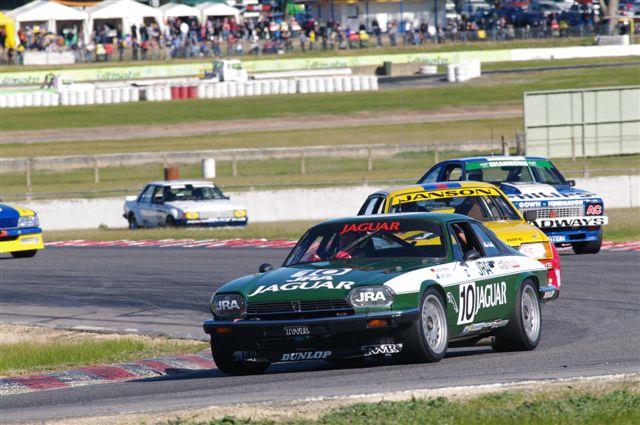
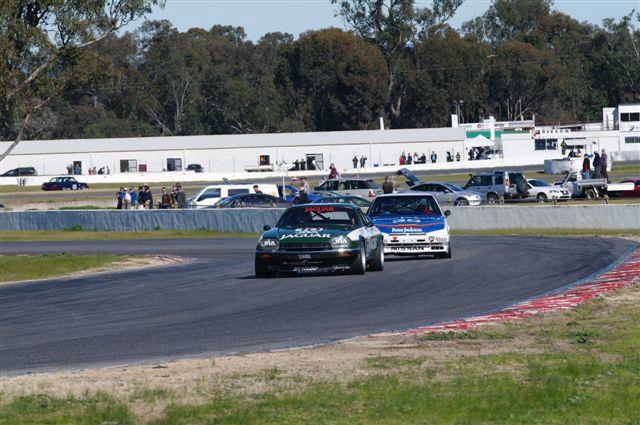
Purr-fect.
Jaguar F-Type R spied testing on Nurburgring
Jaguar has already officially and unofficially shown us their initial prototypes of the all-new Jaguar F-Type sports car sporting a dual center-mounted exhaust pipe layout similar to the Porsche Boxster S. But these latest spy photos show something new. We can see a dual quad exhaust layout which suggest something more powerful lies beneath the hood.
Jaguar already confirmed the 2-seater roadster will be available with a 3.0-liter V6 supercharged engine in two power output levels: 380HP (279kW / 375bhp) with 460Nm (339lb-ft) and 340HP (250kW / 335bhp) with 450Nm (332lb-ft). Following speculative reports, it was later confirmed an even more powerful engine would be available in the form of a supercharged 5.0-liter V8 unit that is already used in the XFR, XJ, XKR and XKR-S. Power output of the existing unit varies from 510PS (375kW/503hp) to 550 PS (405 kW / 542 hp).
You can draw your own conclusions but perhaps there's a chance this prototype testing at the Nurburgring Nordschleife is the more powerful 5.0-litre equipped F-Type R. The new F-Type roadster will be unveiled later this September followed by a market launch in the summer of 2013.
Purr-fect.
Jaguar Heritage Racing at the Oldtimer GP
Success for Jaguar Heritage Racing at the Nürburgring!
Last week the Jaguar Heritage Racing team enjoyed great success in the 40th Nürburgring AvD Oldtimer Grand Prix from 10-12 August, its line-up of Mk 2, C-type and E-type Jaguars - with drivers Alex Buncombe, Chris Ward and Frank Klaas - recording both outright wins and class victories.
The highlight of the weekend came on Saturday when, after a lights-to-flag victory in the first of two E-type Challenge rounds on the Nürburgring Grand Prix circuit, JHR driver Alex Buncombe then ran straight to the team's C-type for the prestigious one-hour pre-'60/'61 sports and GT car event. Racing again within just a few minutes as dusk fell, Alex drove brilliantly to a great class win and fifth place overall, the C-type similarly on-song throughout.

Speaking immediately after this intense period of competition, Alex said: "Driving these cars is a real privilege, and the whole team has done a great job. Both the races today were fantastic for me, and everything went exactly as we planned."
The hard competition began for the JHR team 24-hours earlier, as on Friday 10 August the Mk 2 saloon was entered in the tough 3.5-hour 'Marathon' - the only event in this year's Oldtimer meeting that ran on the fabled Nordschleife. Alex completed the first stint in hot conditions without incident, before a smooth pit-stop after nine laps saw him hand over to Frank Klaas. Still running strongly, a final stop for fuel then saw Chris Ward take the wheel for the last stint - the car's consistently quick pace meaning that, despite a fuel pump issue two laps from the end, the team still recorded a solid third in class.
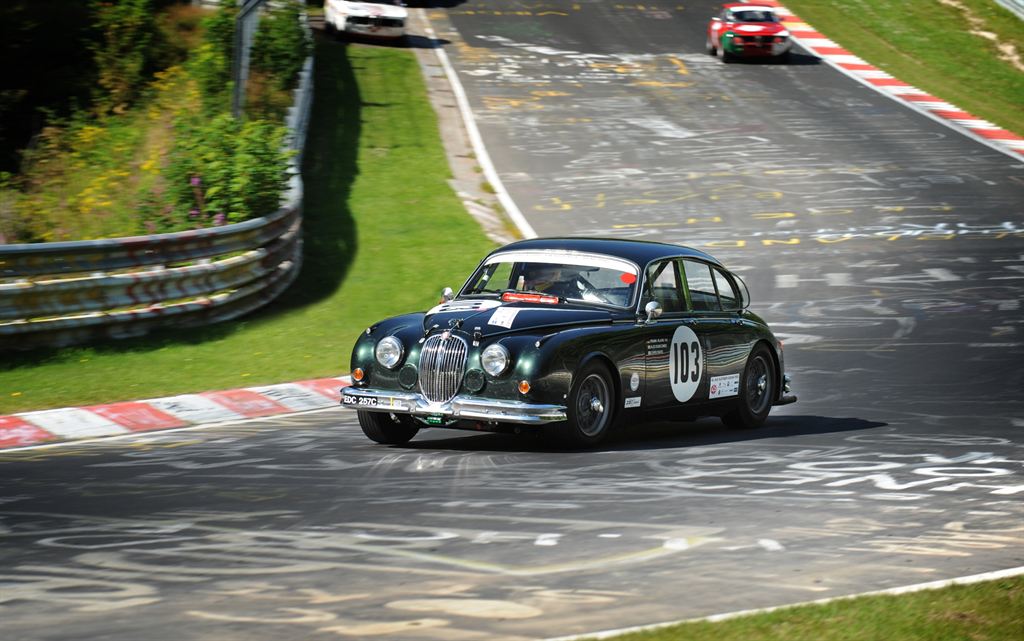
On the Grand Prix circuit for the final day's racing on Sunday 12 August, Alex Buncombe took the wheel of the C-type again in the second pre-'60/'61 sports and GT car race, this time run over 30-mins. Once again, car and driver performed well, Alex recording another class win and fifth place finish overall.
The team's final race of the weekend was the second round of the E-type Challenge where, following his earlier win, Alex once again started from pole position - the only disappointment before the race being that the sister car of Frank Klaas/Chris Ward was unable to take the grid following a mechanical issue in race one. That disappointment, however, was soon tempered by another win for Alex, though it wasn't without some drama as he was tipped into a spin on the very first corner. Having rejoined in fourth place Alex was back in the lead by the end of lap one, coming home a comfortable 4.1-seconds clear at the flag to complete a great weekend's racing.

The next outing for the Jaguar Heritage Racing team will be at the Goodwood Revival, 14-16 September.
Purr-fect.
Jaguar Announces All-Wheel Drive XF and XJ
Yesterday Jaguar announced that it is introducing All-Wheel Drive to the 2013 Model Year XF and XJ ranges.
In recognition of the AWD models' arrival, winter was specially 'transported' to New York; media and celebrities being invited to escape the summer heat at an exclusive unveiling in a snow-dome constructed in Manhattan.
The AWD XF and XJ will be powered exclusively by Jaguar's new 3.0-litre V6 Supercharged petrol engine in 340PS form, and will offer optimised traction in all grip conditions. The AWD models will be available in selected markets including North America, Russia, China and Continental Europe.
Ian Hoban, Vehicle Line Director, Jaguar, said: "Our All-Wheel Drive system preserves all the dynamic qualities of our rear-wheel drive Jaguar saloons in terms of handling, steering quality and ride refinement while adding a new depth of ability in low-grip conditions. The system delivers all the traction benefits you would expect, but the AWD XF and XJ are still very rewarding cars to drive - which was exactly our intention.
View below a technical film explaining the operation of Jaguar All-Wheel Drive:
At-a-glance
- Jaguar is introducing a new All-Wheel Drive (AWD) system to its 2013 Model Year XF and XJ saloon cars for selected markets.
- The AWD system is powered exclusively by Jaguar's new 3.0-litre V6 supercharged petrol engine in 340PS form driving through an eight-speed automatic transmission and featuring Stop/Start technology.
- Jaguar AWD operates 'intelligently', continuously monitoring grip levels and driver inputs to both pre-empt and react to wheel-slip, enabling maximum traction in all conditions.
- Feed-forward torque distribution allows the system to actively anticipate wheel slippage and prevent it occurring, therefore providing greater driver confidence and vehicle stability in low-grip scenarios. Torque split can be up to 50:50 front/rear.
- At speed in normal grip conditions the AWD system delivers drive predominantly to the rear wheels, thus providing the dynamic driving experience all Jaguars are renowned for, while maximising powertrain efficiency.
- Suspension and steering systems have also been reengineered in order for the AWD XF and XJ to match their rear-wheel drive counterparts' acclaimed driving dynamics.
Purr-fect.
Zymol Carbon Wax available for sale at the Purr-fect Gift Shop
Zymol Carbon Wax is available for sale at the Purr-fect Gift Shop. Zymol Carbon Wax is purr-fect for all paint types and is for dark coloured cars. Carbon Wax is actually an "enzyme" that turns into a wax and bonds to your paint when exposed to air during application. Carbon Wax contains 37% Brazilian No. 1 Yellow Carnauba by volume.
Zymol only uses Brazilian No. 1 Yellow and rare No. 1 White Carnauba, the highest grade available. This gives both greater protection and increased depth of shine compared with run of the mill car care products.


